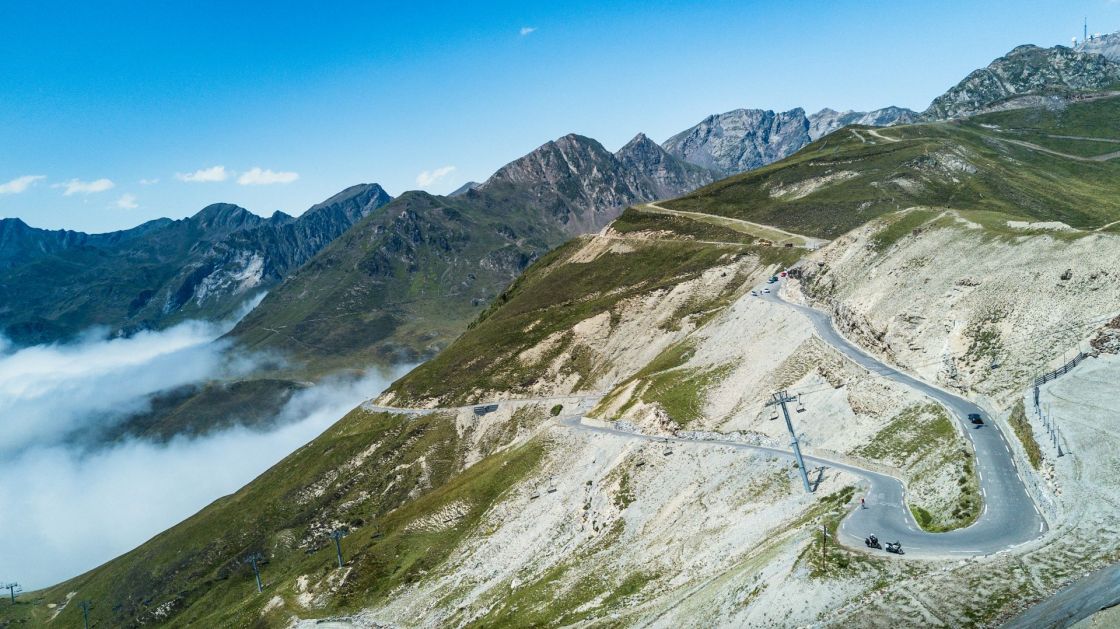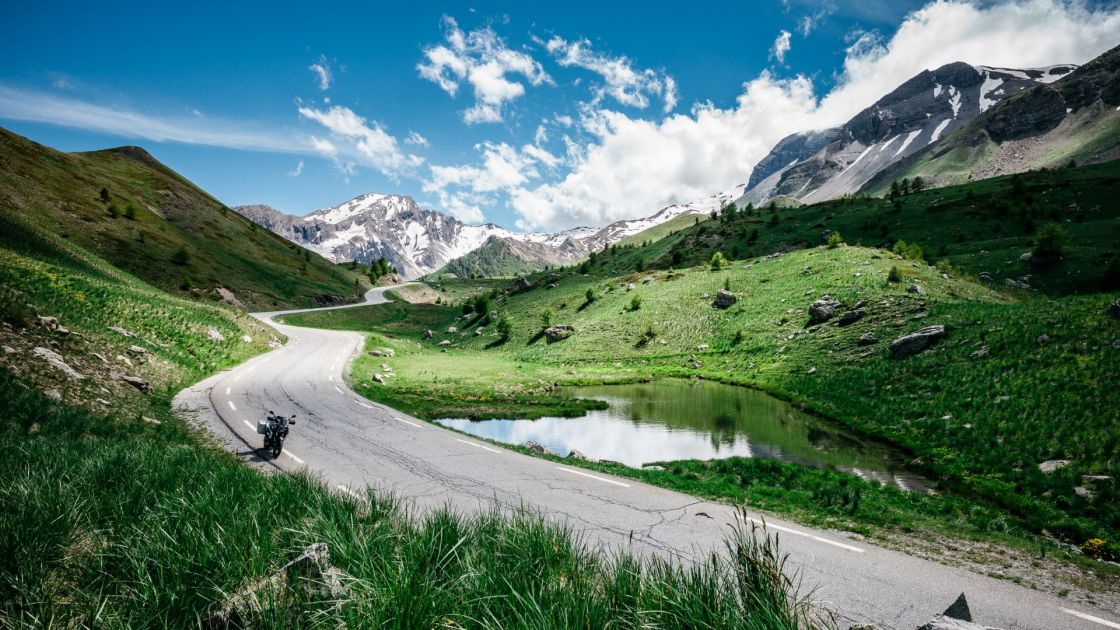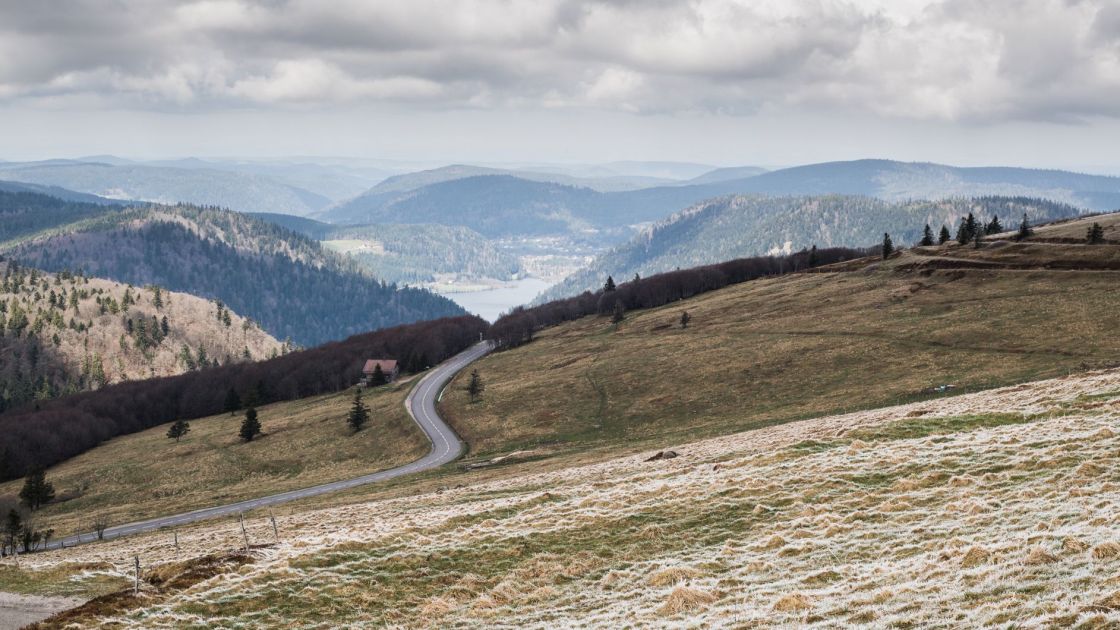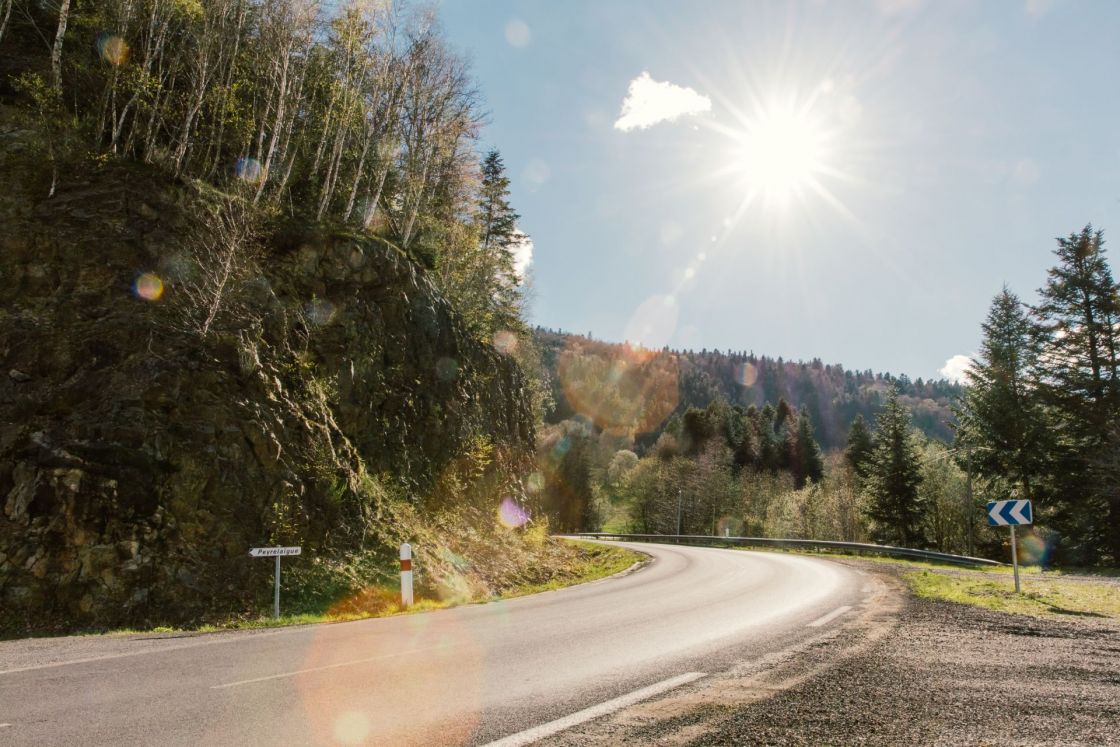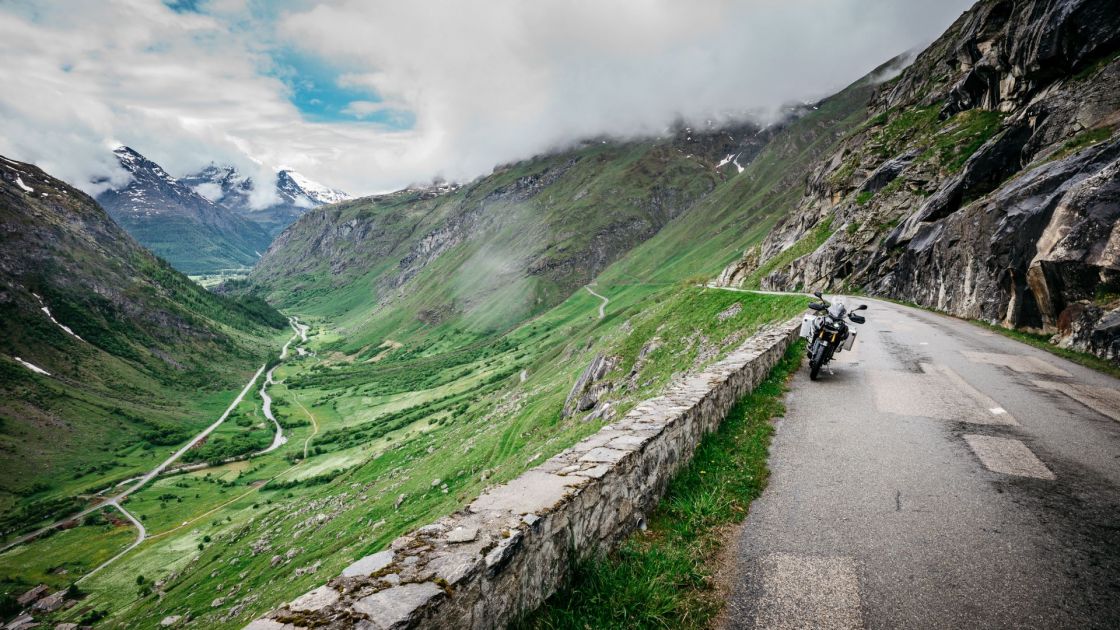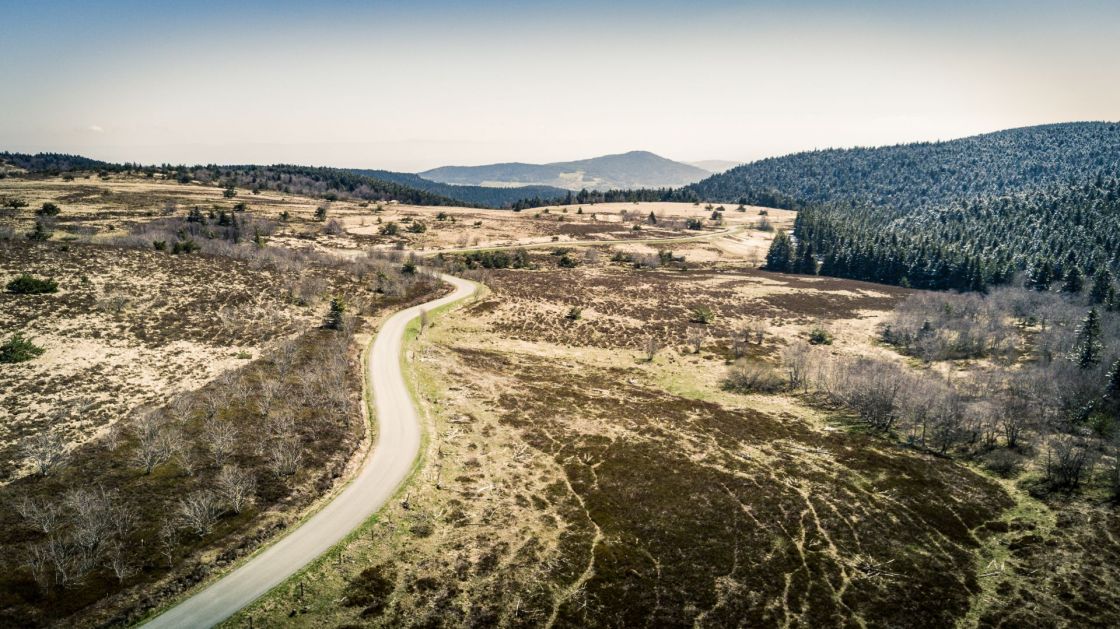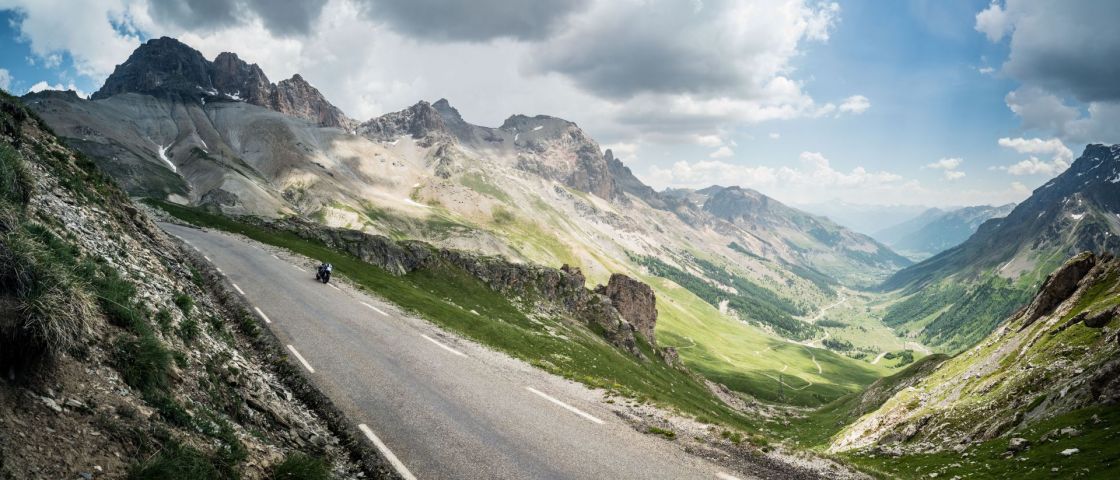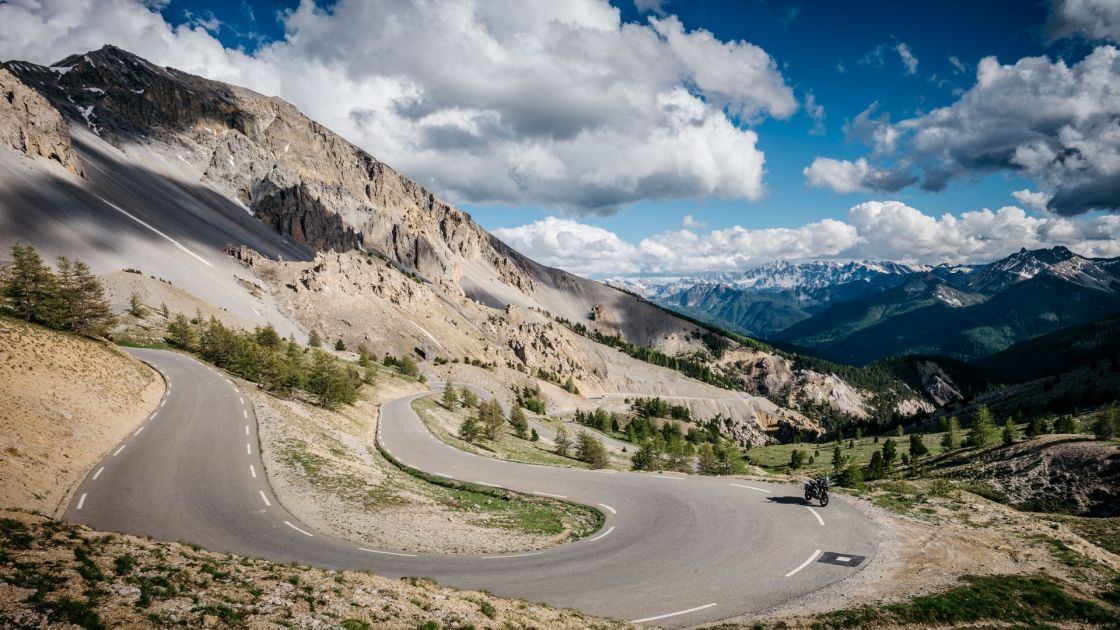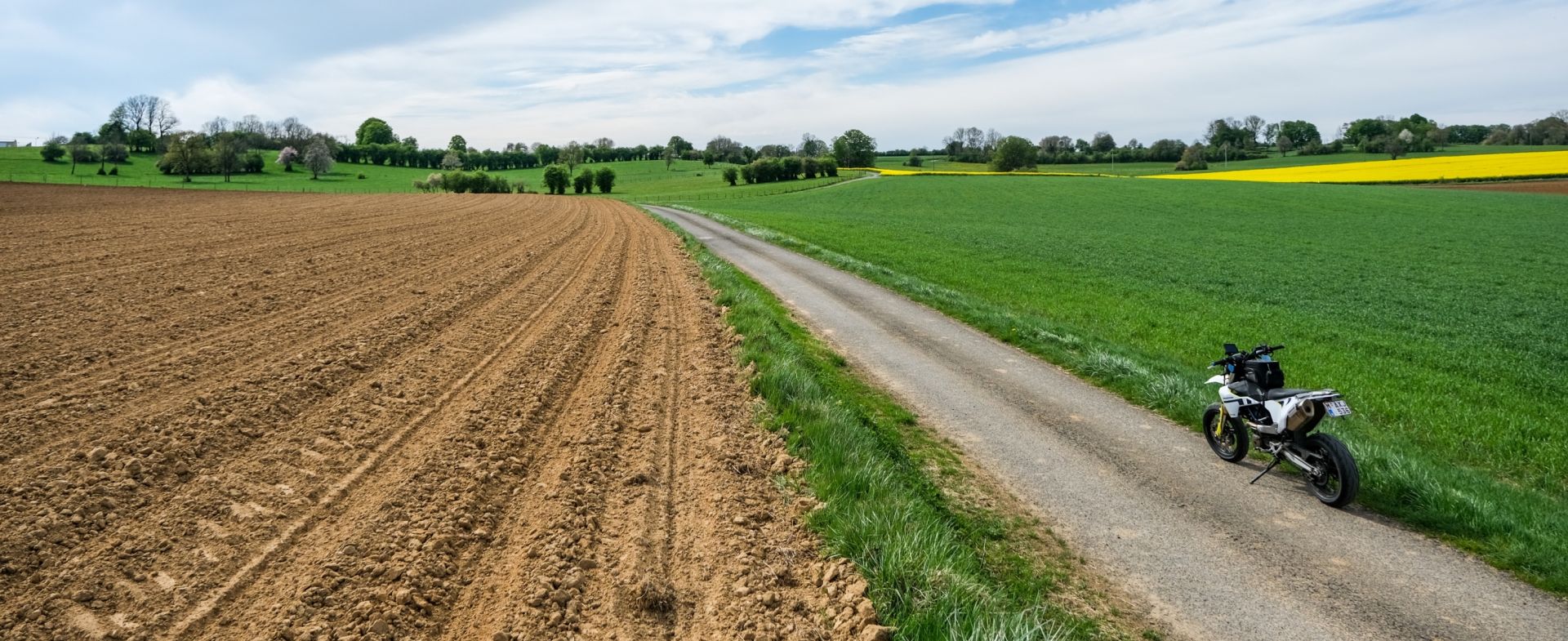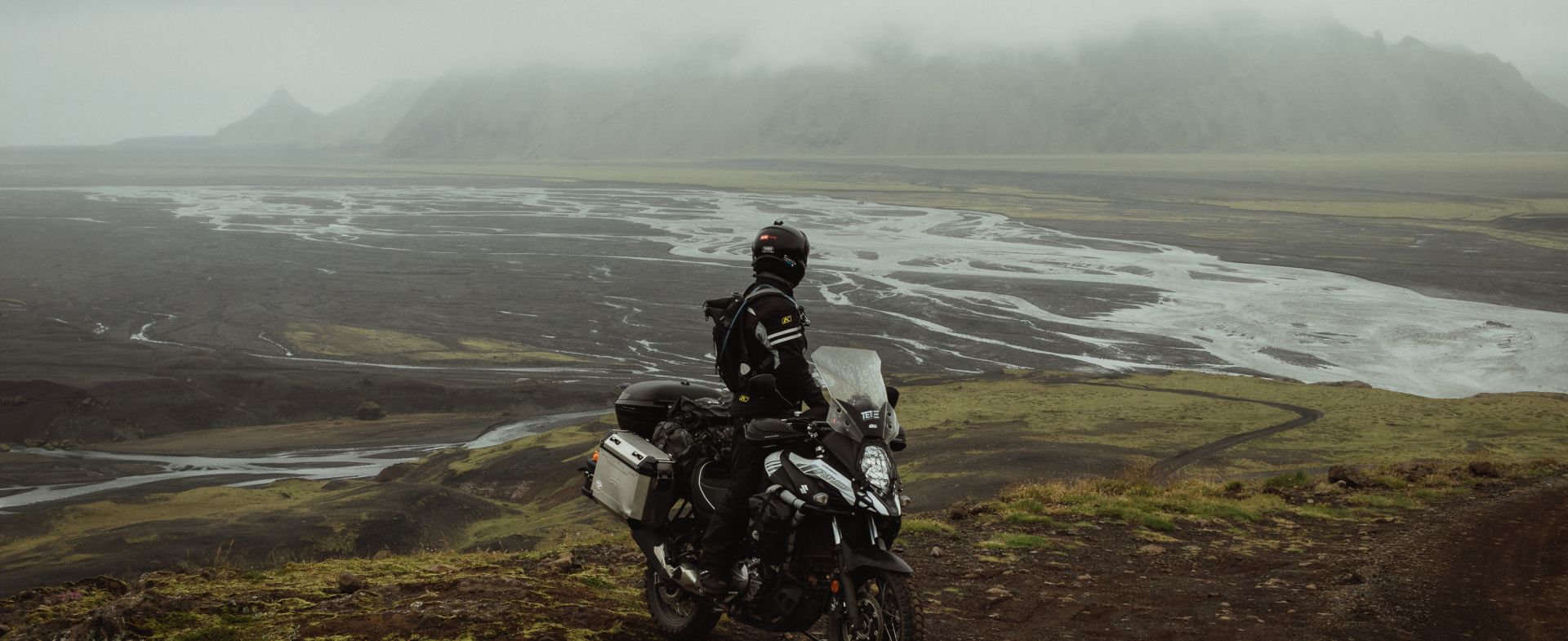Ten scenic roads to discover in France
Motorcycle Diaries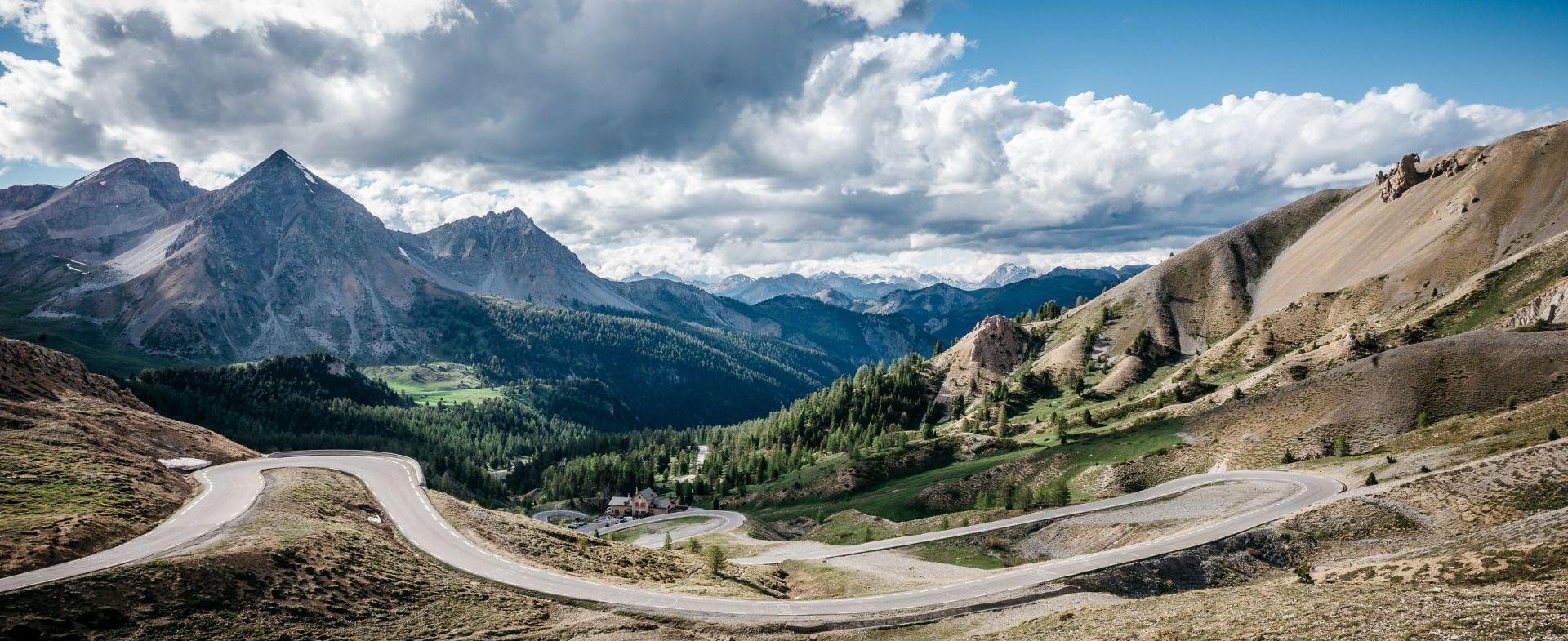
France is an absolute gem which houses about every scenery a man or woman would crave for - even more so if you’ve ever owned a motorcycle.
D918, Col du Tourmalet
We love the Tourmalet, except for the ever-present fog which seems to surround the mountain. What's the point of riding up a col in the fog? Maybe the view above the clouds? Exactly. The Col du Tourmalet has always been a legendary place for (motor)cycling, following the D918 to climb out of Luz Saint Sauveur and devour the next 20 kilometers at an average gradient of 7% to the pass.
Whilst many mountain climbs are famous for their hairpin bends, this climb stands out due to its long ramps only interrupted by a few bends along the way. The road climbs to the village of Barèges which has mutated into a ski station and after a short respite in the gradient the road rises again all the way to the top at 2.115 m.
We’re sure you’ve seen the Tourmalet once or twice on television, usually with a whole bunch of cyclists giving it their all. And that’s no coincidence: no other climb is so closely associated with the Tour de France, as it has been used in the Tour de France ever since 1910.
‘Petite histoire’ on that first time: the story goes that the organisers of that specific Tour de France sent one of their men to investigate whether the race could cross the Pyrenees. To cut a long story short, the guy made his way up the Tourmalet but conditions were so bad that he ended up needing rescuing. Surprisingly - and possibly caused by brain-freeze, as soon as the hypothermia subsided, he sent a telegram to Paris saying ”there was no problem at all to cross the mountain pass”. Crazy people, those Frenchmen.
Alps, D902, Col de Vars
The Col de Vars would not classify as the highest col in the area, but it's worthwhile to include it in a ride as it is in a very beautiful part of the French Alps. It is located between the departments of Hautes-Alpes and Alpes-de-Haute-Provence, and connects the Ubaye Valley with the Queyras valley and Embrun.
With a summit that’s elevated 2.108 meters above sea level and a rather steep climb, it is a challenge - not only for the many cyclists on the slopes, but also for the motorcyclist who’s got to find the appropriate gears. The pass is traversed by the D 902 road, which is rather well paved, but nevertheless remains closed from November to April due to snowfall.
The pass is traversed by the scenic Route des Grandes Alpes and has - as many of its colleagues in this list - been included in the Tour de France more than once. Partly for the projected heroics, but without a doubt also because of the magnificent scenery planted on and around the col. Something which sadly - looking at the amount of tourists up and around the Col de Vars - has not remained a well-kept secret for long…
Route des Crêtes - La Bresse
To set foot on the ‘Col de la Schlucht’ - about 60 kilometers west of Colmar - you’ll need to conquer a mere 1.500 altimeters. When you arrive in the village of Schlucht, a much appreciated summer and winter resort, you’ve just discovered one of the most beautiful places of the Vosges, which will treat you to panoramic views over the Valley of Münster and the slopes of Hohneck.
A tour around the glacier-carved valley will have you riding through a land of pine forest and an endless chain of differently sized lakes. Although our projected road, the Route des Crêtes, follows the main road, you might want to try some side roads to explore the region in any possible direction - it won’t disappoint you in any way!
Another option is to stay on the Crest Road and to circle the Hohneck mountain - one of the highest peaks in the region (1.590 m). The Wildenstein Dam of the Bresse winter-sports station is also well worth a visit, before you cross the border with the "Haut-Rhin" area again and you make your way to Mulhouse.
D978/678 - Parc des Volcans
More southbound, the D978 and D678 offer a wildy variating series of winding roads - ranging from open sections to rocky and well forested parts as well. The 39 kilometers of road we’ve planned out are very smoothly paved and form a staggeringly beautiful way out of the Parc des Volcans.
This extensive range of volcanoes called the ‘Chaine-des-Puys’ includes almost one hundred peaks or ‘domes’ which run through the heart of the Massif central. If you need a break, a small detour to the Puy-de-Dome might be well worth your time: it is the highest volcano around, is absolutely easy to access and the views from the summit might jerk some tears from your eyes.
More of an active person? Then you will be more than happy to park your bike for a few hours to try some hiking, horseback riding, canoeing, paragliding or fishing. We wouldn’t recommend passing by during winter months, but if you do, don’t forget to bring your skis or snowboard along.
D902, Col de L'Iseran
The Col de l'Iseran is known as the King of the Alps and might just be the holy grail for many motorcyclists: it’s the highest paved mountain pass in the Alps, tilted exactly 2.764 metres above the sea level.
As a part of the Graian Alps, it is situated in the department of Savoie in France near the border with Italy, and links the valley of the Isère and the valley of the Arc River between Val-d'Isère in the north and Bonneval-sur-Arc in the south. The D902 road curls up and around the Col, which makes it one of the highest mountain roads of Europe - but sadly, also one of the worst maintained ones.
The surface isn’t very smooth and has some gaping holes and tears in it - exactly what you don’t want when you crack the throttle for some speedy cornering. But it’s enjoyable nevertheless: just cut back on gas a bit, enjoy the views, and you’ll be more than fine. A tip of the house: the north side of the pass road will spoil you with multiple galleries and tunnels, with a steep ascent/descent topping at 12 percent.
Just make sure to check whether the pass is opened before heading over there: normally the road is open from May to October, although the high summit altitude might cause it to be closed anytime due to snowfall. But even when opened, the zone is prone to heavy mist and can be dangerous in low visibility conditions. You’ve been warned…
D6/D40, Col Du Béal
Col du Béal might not ring a bell right away, but rest assured it will remain in memory for the rest of your life after you’ve ridden it for the first time. Situated close to the Dore Valley, it shows the landscape as it used to be throughout the centuries: old mills, abandoned houses, and a main road which doesn’t see a car or motorcycle passing by due to the surrounding A72 and A75 autoroutes.
Symbolically and literally the world is passing by this area, which assures you get to ride the beautiful landscape and the small col in all tranquility and ease. The mountain pass reaches an altitude of 1.390 meter and is surrounded by the so-called Hautes Chaumes, open table-mountains draped with greenish undergrowth.
The road which carves through that panoramic view is irregular to say the least, never that steep but the gradient constantly ranges from 3% to 8%.
Col du Galibier & Col du Télégraphe
The 44 kilometer long string of asphalt we’ve selected is a must-ride for any motorcycle enthusiast: perfect surface, high altitudes, dizzying curves and wonderful panoramic views. If you can’t decide which side to take on first, we would strongly recommend starting from the Col de Telegraphe, which will take you through woods with a bunch of hairpins and a very smooth road surface.
On top of the col, there’s a fantastic stopping point, which offers enough possibility to have lunch or dinner and is very photo friendly as well. Well rested and nourished, you’ll be ready to take on the big one - the Col de Galibier. This pass reaches way above the tree line, which gives it a lunar surface and a surreal otherworld-feel.
Lots and lots of cyclists are pounding their way up the hairpins or rocketing down if they’re on their way back, but luckily the views are very open - so you should be able to dodge all of them. After that portion of human powered cannonballs, you might want to aim your focus away from the sheer drops virtually along the entire route and into the amount of hairpins that would make a well trained astronaut dizzy.
Needless to say the route is not recommended if you have a pillion who’s riding along for the first time - nor is it any good for the faint of heart... That said, the reward at the top is enormous, with a magnificent scenery awaiting. Park your bike and walk a few minutes to a viewpoint which allows to admire the surrounding peaks Meije, Grand Galibier and Mont Blanc. An absolute must.
D76, Combe Laval
This is hands down the most amazing road in the Vercors. The road surface might not be the best you’ve ever witnessed, but the view makes up for it. Riding on it, it’s not hard to see why the Vercors region is often compared to a fortress: separated from its peripheral regions by the steepest of cliffs, the massif’s only connection to the outside world is through a few indentations in the mountain side.
The Combe Laval is one of the most spectacular of its kind: a magistral aureole excavating more than four kilometers into the Vercors mountains. The road rotates around the mountain, going through tunnels and metallic roadways. The construction took place between 1861 and 1898, originally aimed to serving the transportation of timber from the Forêt de Lente to St-Jean-en-Royans.
Nowadays however, the unique view on the "Golfe du Royans" from the Gaudissard belvedere is not to be missed. Because of the beauty of its landscapes, Combe Laval is protected as a national heritage site. Don’t be baffled too much though, as you wouldn’t want to miss a corner and drop about 300 meter into the abyss...
D986, Meyrueis - D63
The marvellous Causse Méjean is a beautifully paved limestone plateau in southern France, which is a part of The Causses and the Cévennes, and an UNESCO World Heritage Site. And it’s not hard to see why: you start of by building up some speed on the flat of the Causse - around the crossing of the D986 and the D63, before twisting down towards the amazing gorges.
Penny for our thoughts? Stop for a coffee break in the magnificent town of Meyrueis, which is dominated by small rivers, being at the confluence of the Jonte, Béthuzon and Brèze rivers. You’ll be pleased to see these rivers, the numerous small bridges and century-old architecture set a very welcoming atmosphere.
After your visit of Meyrueis, you might want to consider taking the D996 to the Gorges de la Jonte. The gorges themselves are less touristy than the more popular Gorges du Tarn - and therefore even more desirable for motorcyclists. Expect nothing less though: a series of - eh - gorgeous views, stone arches, cliffs and steep forested slopes rising dramatically above the road, with the gorges up to 450 metres deep in places. A must see and ride when you’re around.
Alps, D902, Col de L'Izoard
This is definitely one of the nicest passes in the French Alps, but beware: with its height of a whooping 2.360m, the Col de l'Izoard is subjected to late opening - so better double-check before heading over there!
However, it will certainly be accessible during summer months via the D902 road, which connects Briançon in the north and the valley of the Guil in Queyras, which ends at Guillestre in the south. Known as the Casse Déserte - the abandoned , this area has formed a dramatic backdrop to some key moments in the Tour de France, and is a geological freak of nature.
Lying near the entrance of the Parc naturel régional du Queyras, the road twists and twirls endlessly while feasting your eyes on limestone and needle-like, ocher-coloured rock formations.
The mountain pass and its ‘stage’ have been protected ever since 1937, but had been in the hearts of cycling amateurs since 1922. If you think you fit in that last description, you might want to pay a visit to the small cycling museum at the summit, or stop for a brief moment at the memorial to the legendary Fausto Coppi and Louis Bobet. En avant!
